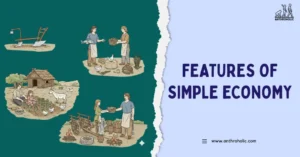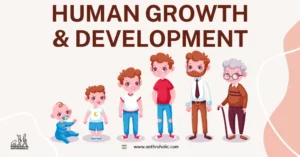AI Answer Evaluation Platform Live Now. Try Free Answer Evaluation Now
Claude Levi-Strauss
Claude Lévi-Strauss didn’t just study myths-he changed how we understand them. Born in 1908 and active well into the late 20th century, Lévi-Strauss revolutionized anthropology by introducing structuralism, a method that sought to uncover the hidden patterns behind human thought, language, and culture. His work spanned continents and disciplines, blending philosophy, linguistics, and ethnography into a distinctive vision of how societies make meaning.

From the rainforests of Brazil to the intellectual salons of Paris, Lévi-Strauss searched for the deep structures that shape kinship systems, myths, and rituals across the world. His sharp intellect and elegant prose turned him into a rare figure: an anthropologist who became a household name, especially in France, where he was celebrated as a national icon.
Early Life and Education
Claude Lévi-Strauss was born on November 28, 1908, in Brussels, Belgium, into a French-Jewish family with deep cultural and artistic roots. His father, Raymond Lévi-Strauss, was a portrait painter, and his mother came from a lineage of intellectuals. The family returned to France during Claude’s infancy, settling in Paris-a city that would shape his intellectual formation.
Raised in an environment rich with art, music, and literature, Lévi-Strauss initially pursued philosophy at the prestigious Sorbonne, graduating in 1931. He was strongly influenced by thinkers like Karl Marx, Hegel, and Émile Durkheim. However, as France plunged into political and social upheaval during the interwar years, his dissatisfaction with abstract philosophy grew. He sought a more empirical, comparative approach to understanding human life-a desire that eventually steered him toward anthropology.
While still teaching at a secondary school, he developed an interest in sociology and ethnology, which were gaining traction in European intellectual circles thanks to the influence of Marcel Mauss and Lucien Lévy-Bruhl.
Early Career and Fieldwork in Brazil
In 1935, Lévi-Strauss took a pivotal step: he joined a French academic mission to the University of São Paulo in Brazil, where he taught sociology. This opportunity marked his shift from armchair theorist to field anthropologist.
During his time in Brazil (1935–1939), Lévi-Strauss conducted extensive ethnographic fieldwork among several Indigenous groups, including the Bororo, Nambikwara, and Tupi-Kawahib peoples. He embarked on grueling expeditions into the interior, often under difficult conditions, accompanied by his then-wife Dina Dreyfus, a trained ethnographer and philosopher.
These early encounters with Indigenous kinship systems and mythologies profoundly shaped his theoretical orientation. Unlike earlier anthropologists who focused on cultural evolution or functionalism, Lévi-Strauss began looking for underlying structures-hidden logical rules that organized society, much like grammar structures language.
His fieldwork reports, including detailed kinship charts, photographs, and myth collections, laid the groundwork for his future books. This hands-on experience was crucial to forming what would later be known as structural anthropology.
Exile and Wartime Years
With the outbreak of World War II and the rise of anti-Semitic laws in Vichy France, Lévi-Strauss returned to Paris in 1939, only to be stripped of his teaching post due to his Jewish heritage. In 1941, he fled Nazi-occupied France and eventually emigrated to the United States.
Lévi-Strauss took refuge in New York City, where he joined The New School for Social Research, a haven for European intellectuals in exile. There, he came into contact with Roman Jakobson, a Russian linguist who would have an enormous influence on him. Jakobson’s work in structural linguistics inspired Lévi-Strauss to adapt similar methods to anthropology-especially in understanding myth and kinship.
These years in exile were intellectually transformative. He deepened his reading of structural linguistics, Saussurean semiotics, and American anthropology (especially Franz Boas and Ruth Benedict). Lévi-Strauss began drafting the early versions of The Elementary Structures of Kinship, which would become his first major publication after the war.
Development of Structural Anthropology
Returning to France in 1948, Lévi-Strauss quickly re-established himself in academic life. He took a position at the Centre National de la Recherche Scientifique (CNRS) and, in 1959, was appointed to the Collège de France, the pinnacle of French scholarly prestige.
That same year, he published one of his foundational texts: The Elementary Structures of Kinship. Drawing from his Brazilian fieldwork and extensive cross-cultural data, Lévi-Strauss argued that kinship systems are governed by unconscious rules of alliance and exchange. He challenged British structural-functionalists like Radcliffe-Brown, favoring a more abstract, rule-based model of society.
His ideas were deeply influenced by structural linguistics, especially the work of Ferdinand de Saussure and Roman Jakobson. Just as linguists study the underlying grammar of language, Lévi-Strauss believed anthropologists could uncover universal structures beneath human customs, especially myths and kinship relations. He was less interested in the surface content of myths than in their internal logic-the binary oppositions (e.g., life/death, nature/culture) that shaped them.
In 1958, Lévi-Strauss released Structural Anthropology, a collection of essays that laid out his methodological blueprint. It introduced structuralism to a broader academic audience, presenting it as a scientific approach to culture. This marked a turning point: structural anthropology became a dominant school of thought in the 1960s, influencing not just anthropology, but also literary theory, psychoanalysis, and philosophy.
Major Works and Intellectual Legacy
One of Lévi-Strauss’s most acclaimed works is Tristes Tropiques (1955), a memoir that reads like a philosophical travelogue. It combined ethnographic detail with personal reflection and poetic prose, blending anthropology with autobiography. Despite-or perhaps because of-its melancholy tone and critical stance on Western modernity, it became a literary sensation in France.
But it was the monumental Mythologiques series (1964–1971) that fully demonstrated the scope of his vision. Spanning four volumes-The Raw and the Cooked, From Honey to Ashes, The Origin of Table Manners, and The Naked Man-this work systematically analyzed hundreds of myths from Indigenous groups across the Americas. Lévi-Strauss treated myths like equations, mapping their structural transformations and revealing how cultures solve existential contradictions through storytelling.
Although structuralism later came under critique-especially by post-structuralist thinkers like Derrida and Foucault—Lévi-Strauss’s impact remained profound. He offered a way to compare cultures without reducing them to developmental stages or Western norms. His work reshaped how scholars approach myth, kinship, art, and symbolism.
Later Years and Recognition
Lévi-Strauss became a towering intellectual figure in France. In 1973, he was elected to the Académie Française, becoming one of the few anthropologists to receive such an honor. His fame extended beyond academia; he was a frequent presence in French media and public discourse.
In later years, he continued to write and reflect on the limits of structuralism and the future of anthropology. While some critics argued that his theories were too abstract or Eurocentric, others praised his rigor and vision. Even as new schools of thought emerged, Lévi-Strauss remained a reference point in debates over human universals and cultural diversity.
He passed away on October 30, 2009, just shy of his 101st birthday. His century-long life mirrored the arc of 20th-century anthropology: from colonial-era fieldwork to global theorizing. Today, he is remembered as one of the most influential theorists of culture, whose legacy continues to echo in disciplines far beyond anthropology.
Conclusion
Claude Lévi-Strauss reimagined the boundaries of anthropology by shifting its focus from cultural description to structural analysis. At a time when anthropology was still often rooted in colonial paradigms, Lévi-Strauss offered a radically different lens: one that sought universal patterns of thought behind cultural differences.
His concept of structuralism-borrowed from linguistics but applied across kinship, myth, and art—opened new pathways for understanding human societies. From his fieldwork in the Brazilian interior to his mythic readings in the Mythologiques series, Lévi-Strauss treated human culture not as chaos but as deeply patterned, intelligible systems.
Even as structuralism gave way to post-structural critiques, his ideas remained foundational. His influence can be seen not only in anthropology, but also in semiotics, literature, philosophy, and cultural studies. In many ways, his work bridged the sciences and the humanities-bringing the clarity of formal systems to the messiness of human life.
More than a theorist, Lévi-Strauss was a thinker who made anthropology philosophical and made philosophy ethnographic. As he once wrote: “The scientist is not a person who gives the right answers, he’s one who asks the right questions.” And few asked more enduring questions about human meaning than Claude Lévi-Strauss.
References
- “Claude Lévi-Strauss.” Encyclopedia Britannica. https://www.britannica.com/biography/Claude-Levi-Strauss
- “Claude Lévi-Strauss obituary.” The Guardian. https://www.theguardian.com/science/2009/nov/03/claude-levi-strauss-obituaryThe Guardian
- “Biography and publications | Claude Lévi-Strauss.” Collège de France. https://www.college-de-france.fr/en/chair/claude-levi-strauss-social-anthropology-statutory-chair/biographyCollège de France
- “Claude Lévi-Strauss: Life, Work, and Theories.” ThoughtCo. https://www.thoughtco.com/claude-levi-strauss-life-theories-4174954ThoughtCo
- “Claude Lévi-Strauss.” Famous Scientists. https://www.famousscientists.org/claude-levi-strauss/Famous Scientists
- “Claude Lévi-Strauss.” Britannica Kids. https://kids.britannica.com/students/article/Claude-L%C3%A9vi-Strauss/275446Britannica Kids
- “Claude Lévi-Strauss.” The Greatest Books. https://thegreatestbooks.org/authors/5479The Greatest Books
- “Claude Lévi-Strauss.” Oxford Bibliographies. https://www.oxfordbibliographies.com/abstract/document/obo-9780199766567/obo-9780199766567-0034.xml




